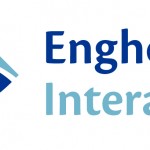
There is a growing sense, though, that businesses are not measuring the right thing. The backlash against average handle time (AHT) as a key metric is gathering momentum. So, is it true that AHT is dead? And ultimately is that a good thing?
Changing Face of the Contact Centre
AHT rose in popularity as an approach when ‘bricks and mortar’ contact centres dominated the market. It became widely used at a time when the preferred interaction method for customers with an issue to resolve, was to phone the company during working hours from a fixed landline.
Today, that business model is becoming increasingly outmoded. Different communications preferences are evolving rapidly. We are seeing the growing consumerisation of technology. According to research from Internet technology company, comScore, in September 2013, 71% of the UK population now own a smartphone. Consultancy firm Deloitte recently released statistics confirming that between 12 and 13 million tablets were sold in the UK during 2013, a 50% increase in tablet sales over 2012.
This new generation of customers want ‘anytime anywhere’ service. They typically have high expectations and low patience levels. They want to communicate wherever they are in the world and they expect contact to be effortlessly successful, first time, every time.
Businesses need to acknowledge this and put in place interaction processes that enable customers to achieve the effortless engagement they are looking for. This means making it easy for the tech-savvy Millennial Generation of customers to self-serve.
To meet the increasingly sophisticated needs of this new wave of tech savvy customers – the so called millenials or generation y, organisations need to deploy highly effective {self service solutions that allow customers to self-serve at any time, on any device in any place}
Tools like self-service user forums, searchable knowledge bases, interactive voice and visual response (IVR) and even artificially intelligent robot agents that can chat with you through a messaging service are all part of the mix in providing effortless customer service
Yet older, more traditional customers and high net worth individuals so called generation x also want personalised human to human h2h customer service. For this group, the meaning of the term is different. Typically, these people are looking for an approach based around personal engagement. Every time they interact with the business, they want to talk to the same person: someone who knows them and understands the nature of their enquiry.
The stark differences between these two customer types highlight the nature of the problem facing businesses today in using AHT as a key metric. The proportion of customers wanting to self-serve continues to grow and consequently interactions carried out over the phone are becoming more sophisticated and complex asking serious questions of the connected enterprise and making AHT increasingly difficult to achieve. And AHT is not necessarily even a desirable target in this new environment. Customers who interact over the phone want to engage with agents who understand their needs and will do their best to resolve their problem in one interaction rather than simply looking to keep call time to a minimum.
You Get what you Measure….but are you Measuring the Right Thing?
So, moving forward, do businesses really want to focus on AHT and, if not, what alternative metrics should they be looking at? Before any business can make such a decision, it first needs to work out what its strategic objectives are. Does it want to focus primarily on offering the cheapest customer service it can, or concentrate on building a connected enterprise that helps build customer loyalty and providing the best possible customer experience? Does the business see its customers as a means to an end or does it see them as its future, to be ‘embraced’ and invested in? These are key challenges businesses need to address before they make a decision on their performance measurement strategy.
Another area of concern relates to legacy attitudes and ways of working. Most contact centres in the UK pre-date the emergence of social media. They inevitably therefore feature behaviours, processes, cultures and a focus on commissions and performance-related bonuses that belong to the old world of the ‘bricks and mortar’ contact centre. They are not in any sense connected businesses, able to communicate across department or functions within the business to resolve queries or find solutions to specific issues. And typically, wherever you have a fragmented strategic or siloed behaviour you are likely to see a business driven by its own internal goals rather than a commitment to the customer. Customers may have been willing to put up with this in the past but in recent years expectations have grown. Poor customer service is no longer likely to be tolerated.
An Alternative Approach
Today, the high-level questions for businesses are: how seriously are they taking the customer; what are they doing to improve the experience and, at a tactical level, how have they evolved their KPIs and metrics to drive the right operational behaviour?
In our view, at Enghouse Interactive, any business that wants to prioritise the customer should be looking at alternatives to AHT. AHT is a compelling example of the shortcoming of the old world approach to customer service. It is typically about a customer service representative on the phone that is remunerated and on commission to get a customer off the phone, regardless of whether or not that customer’s query has been effectively resolved.
Any business that truly values its customers and wants to deliver the best possible experience, will want to move away from AHT and focus on making the interaction process as effortless as possible.
With self-service increasingly prevalent, customer interactions are becoming more complex. So the likelihood of handling them quickly will reduce year-on-year. At the same time, unless businesses can train staff to manage these enquiries and have the mechanisms to route people around the contact centre and their extended business efficiently, they will create friction in the customer interaction process and thereby increase customer attrition
So, rather than concentrating on AHT, businesses should consider whether their customers feel that engaging with the company was an effortless process. One metric that potentially delivers this is first call resolution (FCR), sometimes termed first contact resolution. This measures how effective the business has been in properly addressing the customer’s need the first time they call, thereby eliminating the need for the customer to follow up with a second call.
FCR drives satisfaction because the customer has had their problem, not just their call, dealt with quickly. Companies also benefit from reduced operating costs by cutting the numbers of customers that need to call them back, delivering improved staff morale and increasing cross-sell and up-sell opportunities. Ultimately it is a better metric for customer-facing organisations to measure than AHT because it is effectively tracking customer satisfaction rather than operational efficiency.
Some businesses have moved to higher level metrics like Net Promoter Score that consider questions like: How did we do within this interaction? Was this intervention helpful? Did the goods arrive on time? Net Promoter Score moves beyond a simple measurement of customer satisfaction with a solution or service to evaluate customer loyalty to a specific brand or company.
Underpinning these customer-focused metrics for businesses is the concept of driving continuous improvement to the operational process through quality and performance measures like Six Sigma and Continuous Improvement.
Together, the combination of these approaches is more closely aligned with the future of customer interaction than the old school KPIs and measurements like AHT that continue to exist within contact centres today.
Jeremy Payne, International VP Marketing – Enghouse Interactive
For additional information see Enghouse Interactive’s Company Profile




